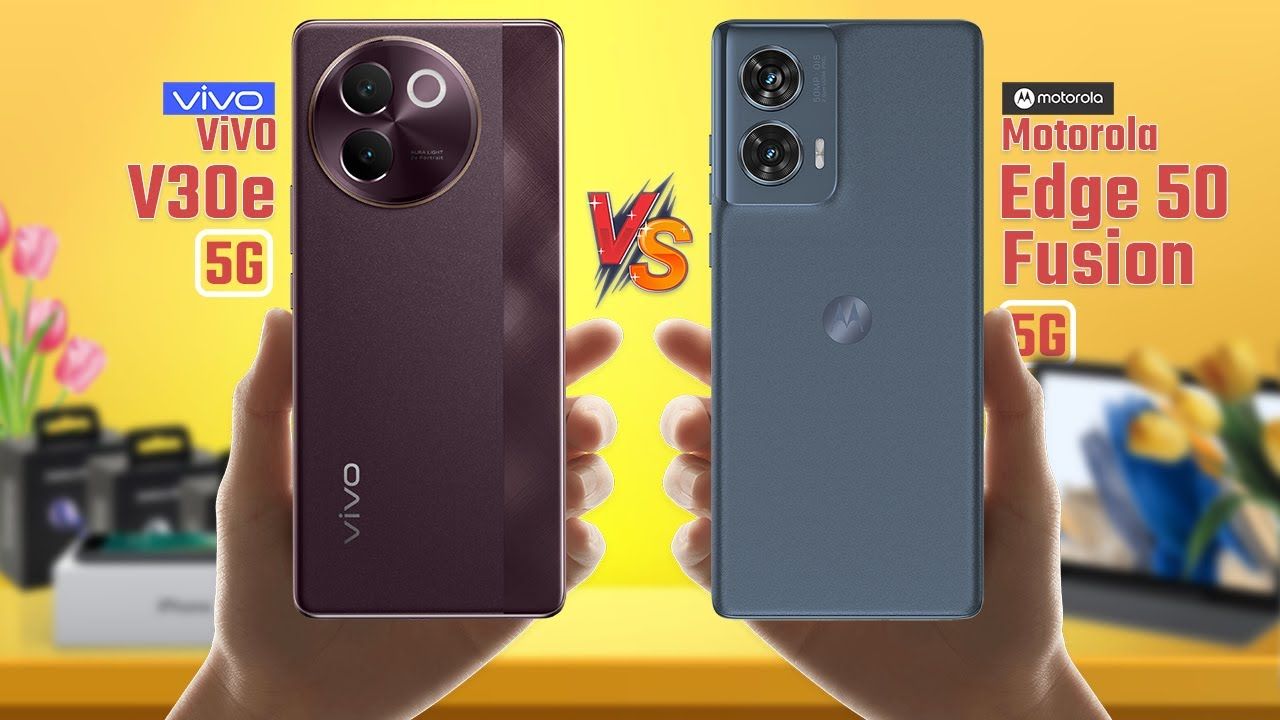Motorola Edge 50 Fusion vs Vivo V30e: In the highly competitive mid-range smartphone market, the Motorola Edge 50 Fusion and Vivo V30e are two fresh faces that deliver excellent value, decent performance, and premium features for under ₹26,000. But which one do you choose? Let’s weigh the pros and cons and determine which phone takes the lead.
Read More: Vivo T3 Pro Vs IQOO Z9s Pro: Which One Is Better for You?
Read More: Vivo X200 VS Vivo X200 Pro: What’s Different?
Design and Build: Trendy and Thin Contenders
Both phones are built on Android 14 and feature a trendy and thin design. The Edge 50 Fusion measures 7.8mm thick and weighs 174.9g among the thinnest and lightest in its class. Vivo V30e is slightly thinner at 7.75mm but a little heavier at 188g. Both include in-display fingerprint readers and modern design, although Motorola, including Corning Gorilla Glass 5 protection in the deal, has it even further behind the others.
Display: Smoothness vs Size
The Edge 50 Fusion boasts a 6.67-inch pOLED screen that supports both a 144Hz refresh rate and a 360Hz touch sampling rate, and it is ideal for people who need buttery smooth performance. It further boasts up to 1600 nits peak brightness, alongside 100% DCI-P3 color gamut support. The Vivo V30e boasts a marginally larger 6.78-inch AMOLED screen, but its refresh rate is limited to 120Hz, and its brightness is 1300 nits. Motorola beats this department with a brighter and quicker screen.
Camera: Front-Facing Power or Balanced Optics?
The Edge 50 Fusion features dual rear cameras with a 50MP primary sensor (Sony Lytia 700C) and 13MP ultra-wide, while 32MP selfie camera. The Vivo V30e, however, has a rear camera resolution with a 50MP primary sensor (Sony IMX882) and 8MP secondary but deviates with a 50MP selfie camera. For selfie lovers, the V30e can be the initial choice, but Motorola introduces an equally well-balanced rear camera setup with excellent ultra-wide angles.
Performance and Storage: Snapdragon Showdown
Motorola is powered by the Qualcomm Snapdragon 7s Gen 2 chip (2.4GHz), while Vivo is powered by the Snapdragon 6 Gen 1 (2.2GHz). Both are octa-core processors, but 7s Gen 2 offers a marginal performance boost, especially for multitasking and gaming. Both handsets feature 8GB RAM and 128GB storage, but Vivo also features 8GB virtual RAM and hybrid memory card support, which could prove to be handy to users who require expandable storage.
Battery and Charging: Big or Fast
Vivo V30e leads for battery capacity on a 5500mAh cell, compared to Motorola’s 5000mAh. The Edge 50 Fusion, however, charges faster on 68W TurboPower over Vivo’s fast charging on a 44W. Reverse charging is also given by Motorola, so it’s that little more versatile as an overall charging thing.
Verdict: Motorola More Balanced, Vivo Taps Selfie Enthusiasts
If you like a phone that is enhanced on screen, charging speed, and slightly improved on performance, Motorola Edge 50 Fusion is the better phone to buy overall. Vivo V30e, though, will be for the buyers who need front cam performance and slightly longer battery life. Both are great buys, but it basically whether you like the smoothness of the screen or the power of selfie.










